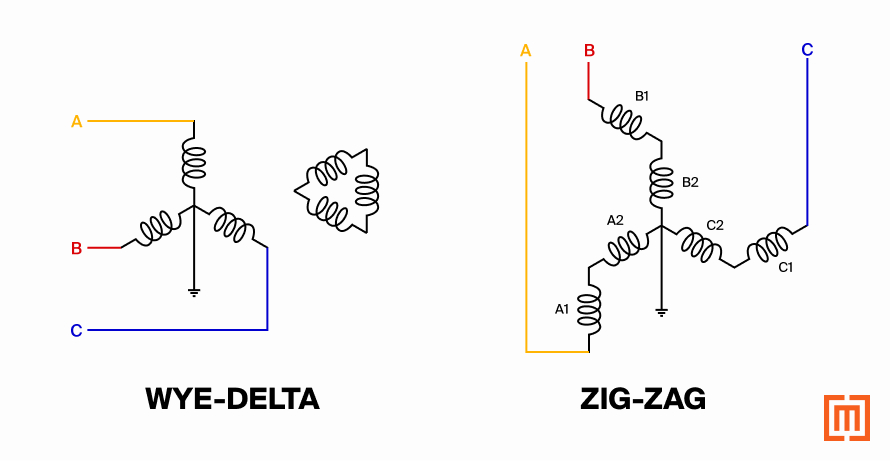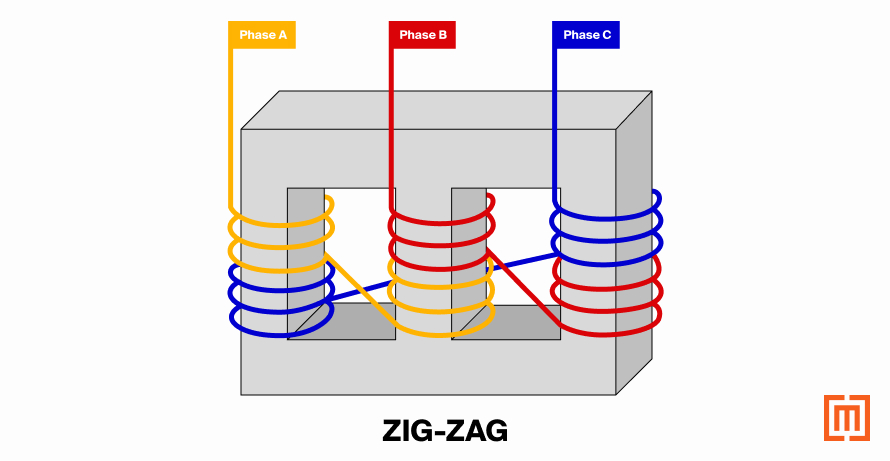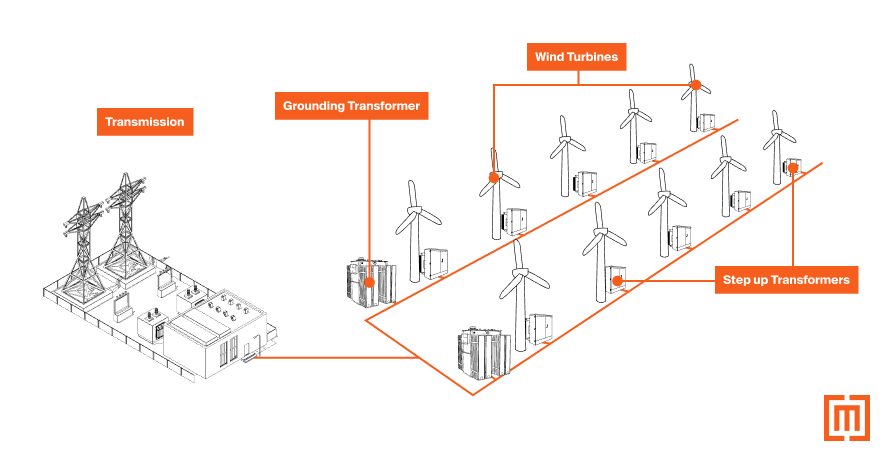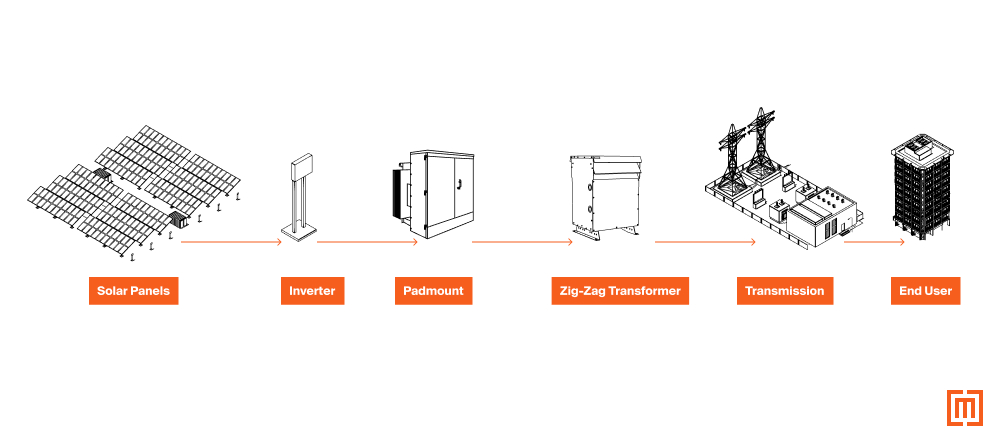Guide to Zig-Zag Transformers: Grounding & Harmonic Mitigation
Zig-zag transformers offer cost-effective system grounding and harmonic mitigation. Learn what they are, how they work, and when to use them.
July 23, 2025
How To's
Have you ever heard of a zig-zag transformer and wondered what it does?
In renewable energy projects, making sure your generation system plays nice with the utility grid is critical. That’s where grounding transformers come in. They help protect the grid and keep everything running smoothly.
Zig-zag windings are a key feature in grounding transformers and also help manage harmonics.
Let’s take a closer look at how zig-zag transformers work and when to use them.
What is a Zig-Zag Transformer?
A zig-zag transformer is a special transformer type with one winding interleaved between the phases in a crisscross pattern. Their winding configuration can also be called an “interconnected star.”
An easier way to explain zig-zag transformers is to compare them to a normal wye winding.

In these two diagrams, a lot looks the same. Both are three-phase transformers. Both windings have a neutral. Both have the general shape of a “Y”.
However, you’ll notice that the end of each zig-zag winding phase angles off in a different direction.
And if you look at the diagram below, you’ll see that each half of a phase rests on a different limb of the transformer core. What’s more, the halves connect in a pattern that resembles a zig-zag. (Hence the odd name.)

Basically, a zig-zag winding is a Wye winding with each phase spread between the limbs in the transformer core.
Common Applications for Zig-Zag Transformers
Zig-zag transformers have several uses, but they are commonly used for either:
- Grounding a power system
- Handling harmonics
Let’s look at both cases.
Grounding Transformers
Zig-zag transformers are commonly used for grounding because they have a neutral and offer a low-impedance path to ground. This helps keep all three-phase voltages balanced—even during a line-to-ground fault. Learn more about transformer design and system grounding.
Now…to be fair, a Wye-Delta transformer can also serve as a grounding transformer. However, a zig-zag transformer may be more cost-effective. It only uses one winding, and requires less material to construct.
So where would a zig-zag transformer be used as a grounding transformer?
Zig-Zag Transformers in Wind Farms
One example of a renewable energy power system needing a zig-zag transformer is a wind farm.
Large wind farms with many turbines often use zig-zag grounding transformers to protect ungrounded lines from faults. In many designs, the substation transformer is the only grounding point for the whole system. If a ground fault happens on a collector cable and the substation breaker trips, that turbine string loses its connection to ground.
The issue? The turbines don’t always realize the string is ungrounded or that a fault occurred—so they keep sending power into the line. This can cause dangerous overvoltages between the healthy cables and ground.
Installing a grounding transformer on each turbine string fixes this. If the string becomes isolated, the transformer restores a ground path, helping control voltages and protect the system.

A solar system is another example of a renewable energy project that benefits from a grounding transformer. Grounding transformers are often required for renewable energy projects because they provide a localized neutral reference point.

Zig-zag windings are also used to deal with various harmonic frequencies.
Harmonic Mitigation
Harmonics in a power system are extra frequencies that show up alongside the normal 60 Hz. They occur in multiples of that base frequency—so the 3rd harmonic is 180 Hz, the 5th is 300 Hz, and so on. If left unchecked, harmonics can lead to overheating, voltage dips, and poor power quality. One special feature of the zig-zag winding is its ability to cancel out zero-sequence currents (or third order harmonics). This is due to the special way the windings are connected around the core. If you need a transformer that will withstand the effects of overheating, rather than directly address certain harmonics, you may want to consider a k-factor rated transformer.
Zig-zag windings are also used in harmonic mitigating transformers (HMT’s). They normally serve as the secondary winding next to the unit’s delta primary. While one standalone zig-zag winding can help with zero-sequence harmonics, additional winding connections or HMT’s would be used to isolate any other harmonics.
Considerations for Zig-Zag Transformers
No Voltage Conversion
As you might assume from their unique name, zig-zag transformers have a limited number of applications. Once again, they are usually used as either a grounding transformer or an additional unit to handle harmonics. The singular winding on the zig-zag is an advantage in that it requires less space and usually means the unit costs less. However, standalone Zig-zag windings cannot step up or down voltages like a regular transformer.
Limited Harmonic Mitigation
If you’re dealing with harmonics in a power system, you might need more than one zig-zag transformer. You’ll usually need at least two to properly isolate the problem frequencies.
Conclusion
We hope you now have a basic understanding of how zig-zag transformers could help your existing power system. They’re a cost-effective way to ground power systems and mitigate harmonics.
If you know you need a zig-zag transformer, fill out the form below.
We will get you the perfect transformer for your project.

.jpg)










